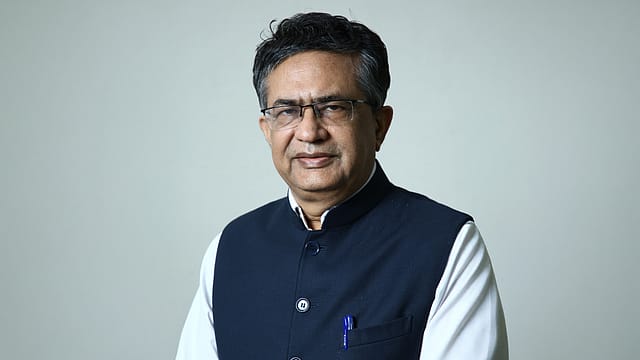India shines in uncertain global economy: NSE MD Ashishkumar Chauhan
ADVERTISEMENT

At a time when the global markets face challenges such as escalating trade tensions, slowing growth in advanced economies, and geopolitical risks leading to economic fragmentation, India’s growth story remains strong, said National Stock Exchange (NSE) MD & CEO Ashishkumar Chauhan on Thursday.
“India today shines as a beacon of stability and opportunity in the global economy,” he said while speaking at Assocham’s 16th Capital Market Conference in New Delhi.
He said that India stands out as one of the fastest-growing major economies, with GDP growth projected at 6.2% in FY26 and 6.3% in FY27. On the other hand, global economic growth is expected to ease from 3.3% in 2024 to 2.8% in 2025, with a modest recovery to 3% expected in 2026, he said, citing IMF growth projections.
“These figures reflect more than a cyclical rebound—they highlight the depth, resilience, and dynamism that characterise India’s ongoing economic journey,” Chauhan said.
India to become the fourth-largest economy in 2025
According to the NSE CEO, India is set to surpass Japan in 2025 to become the world’s fourth-largest economy, rising from the 13th place at the start of the century. According to the IMF, it is on track to cross $5 trillion by 2027 and emerge as the third-largest economy by 2028. “This growth is not episodic but structural, driven by a combination of strong domestic consumption, rapid formalisation of the economy, extensive digital public infrastructure, and a young, aspirational population with a median age of just 28 years—among the youngest globally. India has already signed a trade deal with the UK and is on course to make deals with other countries, including the US.”
December 2025
The annual Fortune 500 India list, the definitive compendium of corporate performance, is out. This year, the cumulative revenue of the Fortune 500 India companies has breached $2 trillion for the first time. Plus, find out which are the Best B-schools in India.
NSE’s contribution to economic growth
In the past three decades, the NSE has been at the forefront of transforming the capital markets in India, enabling a fair, efficient, and transparent market, said Chauhan. “India has been leading several first-of-its-kind initiatives in the capital markets worldwide. Many of the pioneering initiatives in Indian financial markets were conceived and commenced at the NSE.”
He said that the NSE was India’s first digital public infrastructure and the first and till date the largest fintech. Electronic, screen-based trading started at the NSE in 1994. The satellite-based connectivity put up by the stock exchange was a decade before Indians saw nationwide, online banking.
Capital markets mirror the Indian economy
India’s equity capital markets have mirrored the strength and growth of the broader economy, reflecting the country’s evolving economic landscape. Today, India ranks as the fourth largest equity market globally, trailing only the United States, China (including Hong Kong), and Japan, said the NSE CEO.
India’s market capitalisation has grown more than 120 times in 30 years since the NSE started operations in 1994, and stands at about ₹440 lakh crore ($5.1 trillion). The market capitalisation of NSE-listed companies has increased nearly six-fold in 11 years during the tenure of the Modi government. On similar lines, the market capitalisation to GDP ratio has more than doubled from 60% in FY14 to 124% in FY25.
“This is a remarkable achievement, considering no other country in the per capita income range of $2,500 to $20,000 boasts of a comparable market size. The market capitalisation of Indian equities now stands at nearly 1.6 times the size of the banking sector, underscoring the growing significance of capital markets as a key driver of economic expansion,” he added.
The Nifty50 Index, which completed 29 years in April 2025, has delivered long-term compounded returns of 11.8% in rupee terms and 8.5% in dollar terms in 29 years, outperforming global benchmarks like the S&P 500 (7.6%) and gold (7.7%).
